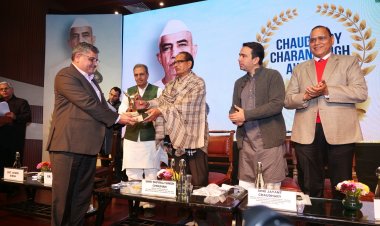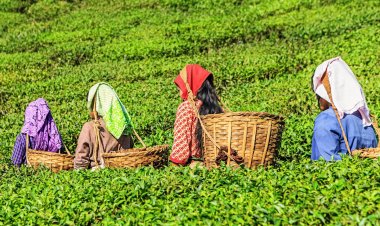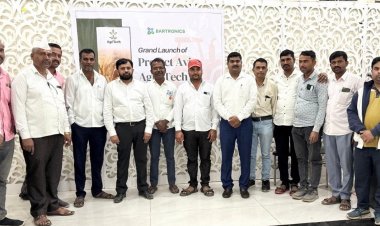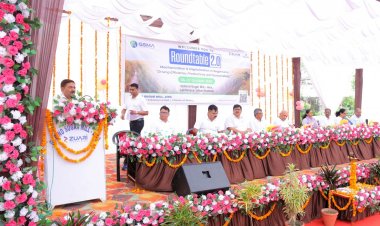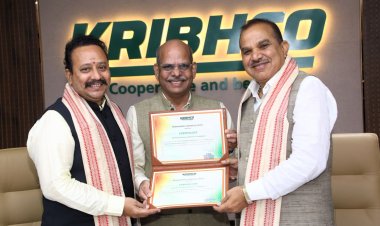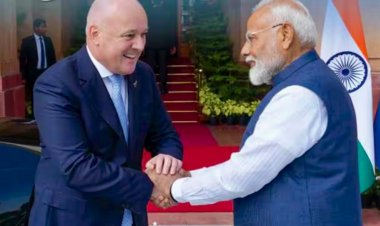Only phosphate subsidy goes up in NBS notification; will the fertilizer companies bear the increased cost of MOP and other complex fertilizers or the farmers?
The subsidy has gone up only on phosphate in the notification issued by the Department of Fertilisers on May 20 regarding the subsidy rates under the NBS scheme. There has been no increase in the subsidy on the other nutrients — nitrogen, potash and sulphur. On the other hand, an increase has been registered over the past few months in the raw material prices for these nutrients in the international market.

In a high-level meeting held under the chairmanship of Prime Minister Narendra Modi to mitigate the political pressure and farmers’ resentment caused by the massive increase in the di-ammonium phosphate (DAP) prices, it was decided to go for a massive increase of Rs 14,000 per tonne in DAP subsidy. As a result, the DAP subsidy has now gone up to Rs 24,231 per tonne. The farmers will get DAP at the old price of Rs 1,200 per bag.
However, the subsidy has gone up only on phosphate (P) in the notification issued by the Department of Fertilisers on May 20 regarding the subsidy rates under the NBS scheme. There has been no increase in the subsidy on the other nutrients — nitrogen (N), potash (K) and sulphur (S). On the other hand, an increase has been registered over the past few months in the raw material prices for these nutrients in the international market.
Given this situation, the issue of non-DAP complex fertilizer prices, especially that for Muriate of Potash (MOP), has become complicated. Some of the companies had increased its price in February. Besides, only time will tell whether the companies will go for a price increase in the wake of the increased prices for the other nutrients or bear the burden on their own.
The per kg subsidy rates have been announced for N, P, K and S under the Nutrient-Based Subsidy (NBS) scheme in the notification issued by the Department of Fertilisers on the evening of May 20, 2021. Under the new subsidy rates, the phosphate subsidy has been increased from Rs 14.888 per kg to Rs 45.323 per kg. The subsidies on N, K and S have been kept at the existing levels of the April 3, 2020, notification. In the May 20 notification, the nitrogen subsidy continues to remain at Rs 18.789 per kg, that on potash at Rs 10.116 per kg and that on sulphur at Rs 2.374 per kg.
As per the notification issued by the government on May 20, 2021, under the new subsidy rates, a subsidy of Rs 24,231 per tonne will be granted on DAP, which consists of 18 per cent of N and 46 per cent of P. Earlier, the subsidy level on DAP was Rs 10,231 per tonne. On the other hand, the subsidy on MOP, which consists of 60 per cent of K, continues to be at the existing level of Rs 6,070 per tonne. The subsidy rates have gone up for all phosphatic complex fertilizers in the wake of the massive increase in phosphate subsidy.
Besides, the notification says that the new subsidy rates are applicable from the date of notification. These rates are for the current Kharif season and will continue to be applicable up to October 31, 2021. As for the period before the notification, the old subsidy rates will apply. Also, two more complex fertilizers have been included under the NBS, thus increasing the number of such fertilizers to 24. Earlier, subsidies were granted on 22 complex fertilizers under the NBS.
The DAP prices have gone up from $395 per tonne in October 2020 to $572 per tonne now. The price of urea has gone up from $275 per tonne to $365 per tonne over this period. The price of MOP has gone up from $230 per tonne to $280 per tonne. Among the raw materials, the price of ammonia has gone up from $280 per tonne to $550 per tonne while that of sulphur from $85 per tonne to $210 per tonne. In the July-September 2020 quarter, the imported prices of phosphoric acid stood at $620 per tonne, which have now increased to $998 per tonne.
Regarding the NPK fertilizer prices, the notification has made it clear that the companies will have to notify the Department about the MRP and print the subsidy on the fertilizer bag.
In conversation with the RuralVoice, industry sources have told it that there has been an increase of about $50 per tonne in the price of MOP. It remains to be seen how this price rise will be accommodated in the current situation because the margins of producer companies have come under pressure. Indian Potash Ltd (IPL), which counts among the largest MOP-selling companies in the country, had increased the MOP prices in February. After the price increase, the price of an MOP bag (50 kg) from IPL is Rs 1,000. That leaves little possibility of the company going for any further increase in the days to come. The MOP bags from other companies are also priced at Rs 1,000.
Another source says, “Since the subsidy has been increased only on P, the companies will come under pressure in the case of complex fertilizers where the share of P is small. Most of the companies will first suffer pressure on their margins. They will go for price increase only as a last resort.”
It now remains to be seen how the industry accommodates the rise in the prices of nitrogen, potash and sulphur used in complex fertilizers as the government has increased only the phosphate subsidy. Or will this burden be shifted to the farmers by increasing the fertilizer prices? If this happens, the resentment of the farmers may continue in spite of the relief given on DAP.



 Join the RuralVoice whatsapp group
Join the RuralVoice whatsapp group

















